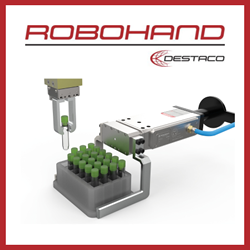Innovative Flexible Automation Drives Rapid Growth
Toyota's U.S. Robotics Boss Promises Results Within 5 Years
The ABC of RPA, Part 3: What Steps Should I Take in Order to Start the Robotics Journey?
Why the Future of Robotics Lies in the Code
Artificial Intelligence Produces Realistic Sounds That Fool Humans
Wal-Mart Experimenting With Robotic Shopping Cart for Stores
The ABC of RPA, Part 2: What are the opportunities to automate?
Google's developing its own version of the Laws of Robotics
The ABC of RPA: What is robotics and automation in the office?
Robotic Pickers and Forklifts
OpenAI Gym Beta
Forget self-driving cars: What about self-flying drones?
SUNSPRING by 32 Tesla K80 GPUs
Employing Drones to Solve Business' Most Complex Issues
5D Robotics + Aerial MOB = Autonomy and Reliability
Records 946 to 960 of 1195
First | Previous | Next | Last
Featured Product

